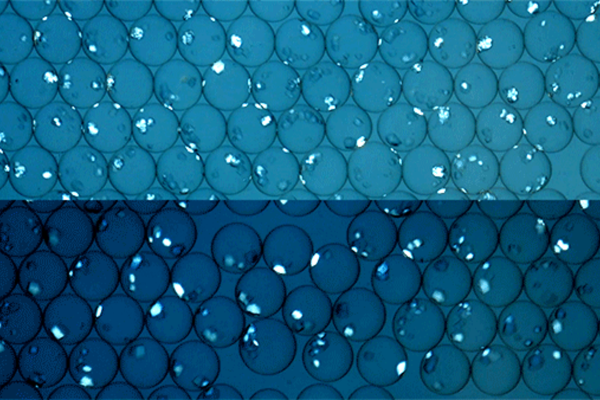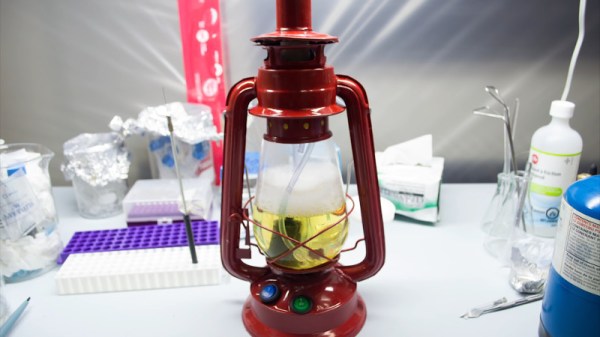A bioreactor is a useful thing to have in any biology lab. Fundamentally, it’s a tank in which biological activity can be nurtured and controlled. [The Thought Emporium] needed a visual aid for an upcoming video on bioluminescent bacteria, but figured a single test tube full of the little critters just wasn’t visually striking enough. Thus began the build to turn a kerosene lantern into a full-featured bioreactor.
The ideal bioreactor for the project needed to be visually appealing, biologically safe, and to have the possibility for continuous operation. First, the lantern’s base was sealed with aluminium plate and silicone sealant. The top was then fitted with a plastic plug, which contained passthroughs for air and fluid feeds, UV LEDs for luminescence tests, as well as potential sterilization purposes. Wiring was neatly passed through the arms of the lantern, and an air pump hidden in the top. A battery compartment was also installed so the reactor can be portable, even when fully loaded.
The bioreactor was first filled with highlighter ink, and the UV lights switched on, confirming that the reactor does look the part when filled with glowing fluid. Then, it was flushed with hydrogen peroxide, before being refilled with growth medium and an E. Coli strain which produces a fluorescent red protein. Growth was successful, and there are future plans to use the bioreactor for other projects, too.
It goes without saying that it’s important to take the proper precautions when hacking on biological projects, lest you inadvertently create the zombie virus and take down half the population of the eastern seaboard. Regardless, it’s an impressive build that showcases various techniques for working with biological matter that may not be familiar to the home hacker. If you’re looking for more automation for your home biology hacks, perhaps the OpenLH project may interest you. Video after the break.
[Thanks to Baldpower for the tip!]
Continue reading “This Kerosene Lantern Becomes A Compact Bioreactor” →














